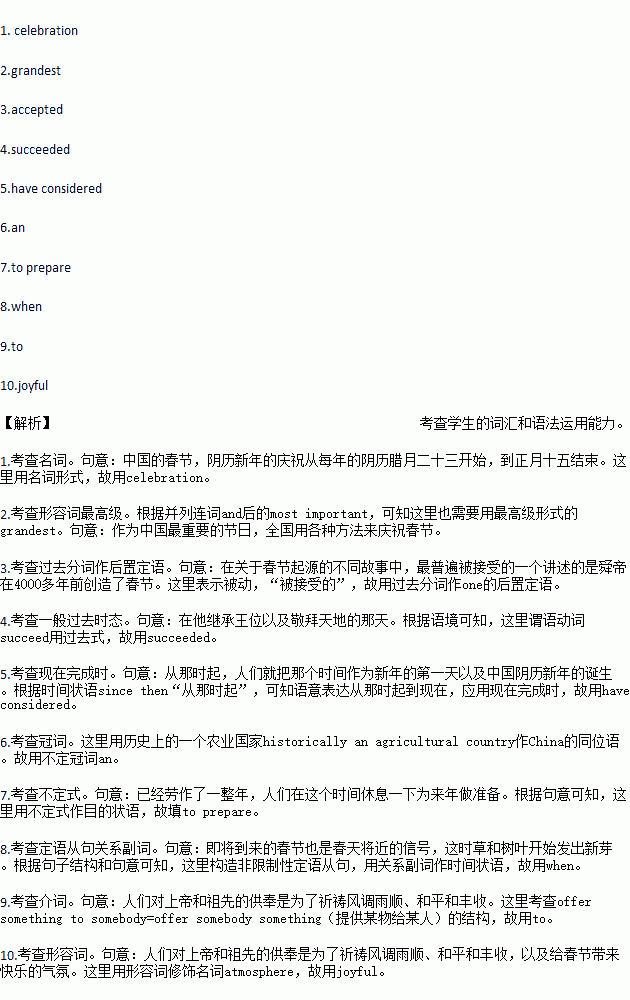题目内容
阅读下而材料,在空白处填入1个适当的单词或括号内单词的正确形式。
China’s Spring Festival, a1.(celebrate) of the lunar year, starts on the 23rd day of the 12th month of the Lunar calendar and finishes on the 15th day of the first month. Lunar New Year’s Eve and the first day of the New Year are its high point. China’s2.(grand) and most important holiday, the Spring Festival has been celebrated in diverse ways throughout the county.
Among the various stores about the origins of the Spring Festival, the one most commonly3.
(accept) tells of how Emperor Shun, legendary leader of ancient China, created it more than 4,000 years ago. On the day he4.(succeed) to the throne(王位)and worshiped heaven and earth. Since then people5.(consider)that occasion as the first day of the New Year and as how the Chinese lunar New Year came into being.
Winter is the relaxed season in China, historically6.agricultural country. Having labored for a whole year, people take a rest at this time7.(prepare)for the coming year. The coming New Year also signals the approach of spring,8.grass and tree leaves start to produce new shoots. The sacrifices that people offer9.gods and ancestors are prayers for favorable weather, peace, and large harvests, and give Spring Festival10.(joy).
 金钥匙试卷系列答案
金钥匙试卷系列答案

 write is as important as what we write.
write is as important as what we write. d.
d.